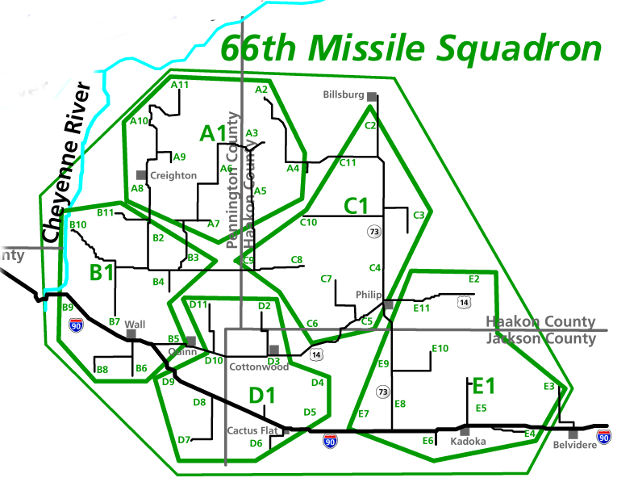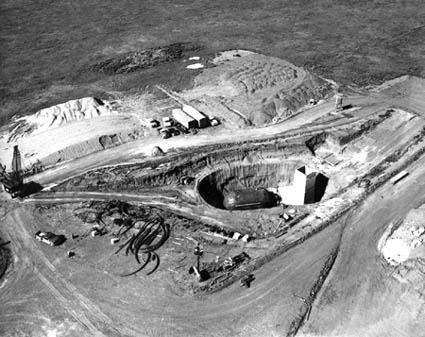

The Minuteman was intended for large-scale deployment in order to deter nuclear attack by forcing the Soviets to expend its missiles targeting Minuteman I silos instead of civilian population centers. Warren AFB in Wyoming, Minot AFB in North Dakota, and Whiteman AFB in Missouri in 1963. The Minuteman IB entered service at four other bases, Ellsworth AFB in South Dakota, F.E. The Minuteman IA entered service in 1962 at Malmstrom Air Force Base (AFB) in Montana. The LGM-30B Minuteman IB model was identical in all respects to the Minuteman IA except for an increased length of 17.0 m, slightly greater range, and use of the Mk. It had a three-stage solid propellant design. The missile had a length of 16.45 m, a maximum body diameter of 1.88 m, and a launch weight of 29,500 kg. This accuracy was likely around 500-1,000 m CEP, given the accuracy of comparable systems of the time. The system used an inertial guidance system with a pre-programmed digital computer. This RV carried a single W-59 nuclear warhead which had a 1 MT yield. The LGM-30A Minuteman-IA had a range of 10,000 km for its single Mark IV Reentry Vehicle (RV). missile development.” After a relatively short test period of 21 launches, the missile entered service the following year.

Minuteman I flight testing began in 1961 at Cape Canaveral, with the first launch characterized as “the most successful first flight recorded in the history of U.S. Both solid fuel and internal stabilization methods have since become commonplace in the U.S. The Minuteman I was also notable for its lack of stabilization fins. Instead, it relied on internal stabilization mechanisms like vernier thrusters to maintain or adjust its course. This stands in contrast to the liquid oxygen (LOX) and Aerozine fuels which caused several major accidents with missiles like the Atlas and Titan I. Furthermore, solid fuel is less volatile, does not leak, or require refrigeration. Moreover, solid fuel is generally considered more reliable – solid-fuel engines are generally less complex, which reduces the number of failure points and simplifies maintenance. This substantially reduced the time between receiving launch orders and the missile’s launch. Using solid fuel meant that the missile did not require fueling prior to launch, differentiating it from the Atlas and Titan I. Chief among these was the missile’s use of solid fuel. 1įor several reasons, the Minuteman I was America’s first modern ICBM.

Air Force began the bidding and development process for the Minuteman I in 1958. ability to retaliate effectively. With this in mind, the U.S. The limitations of liquid-fueled, gantry-launched missiles, such as Atlas and Titan I sparked fears that a Soviet first strike could potentially negate the U.S. defense planners recognized their ICBM arsenal was becoming increasing vulnerable.


 0 kommentar(er)
0 kommentar(er)
